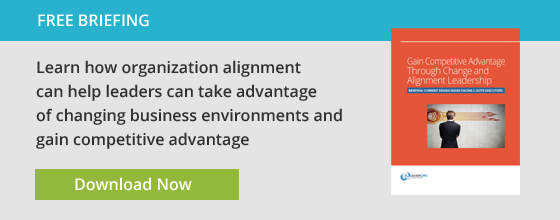How do you know if your business model and organization design will deliver your expected results? There is nothing more frustrating than spending resources and time on an organization transformation effort only to discover, after much time and investment, that the desired results do not deliver the marketplace value you hoped for. Perhaps businesses can take a lesson from the organizations that use a test & learn approach to quickly design, test, refine, and implement changes.
The idea of test & learns originated in Agile software development methodologies. Rather than spending months or years designing complex software hoping that it would all come together as designed, Agile methodologies work on small, discreet work packets and then implement quickly to verify success. If it works, great! If not, then learn quickly and make refinements before fully implementing the product.
For example, companies may create part of an app or a pilot app and offer the service at no charge to customers in order to test the product before fully developing and launching it. This initial development does not require as much time, investment, or commitment as the full app but still allows customers to review the free app and provide feedback.
Then, before further development, the company reviews customer feedback and can either move forward with full app development, kill the product, or make the necessary changes to meet customer and marketplace demands. In essence, the test & learn process allows many software companies to minimize unnecessary development costs, time, complexity, and energy on products that do not meet customer or marketplace expectations.
So, how do we apply test & learn approaches to organization business model transformation or design? At its heart, test & learn methods rely on developing smaller aspects of a project before fully scaling the idea. Rather than implement an organization-wide redesign all at once, companies can isolate the design to a certain department(s) to test the utility of the design before scaling it to the entire organization.
To understand how this works, consider an example from a former client competing in the home improvement retail space who wanted to implement a new design. Through their analysis, they discovered that many of their customers came into the store with the expectation of undertaking a large home improvement project but left the store without buying any of the supplies needed to start the project. The result was a staggering amount of lost potential sales.
Our client wanted to test if they could create a different store experience and organization design that would help change the customer’s behavior. Rather than organize a store by material type, (lumber, electrical, plumbing, shelving, etc.), instead they experimented with grouping the store by household rooms (kitchen, bathroom, bedroom, etc.). In this way, customers wouldn’t need to walk around the entire store to acquire their supplies but could instead go to one location. Again, the hope was that this would improve the ease and likelihood to buy materials for their home projects.
Rather than change the entire organization, our client used a test & learn approach that only utilized the new layout experience in a few stores. Among many things, they tested to see if sales improved in those locations and, perhaps more significantly, how the merchandizing department would handle the changes. Would the changes drive customer and internal employee behavior? Would the changes to the merchandizing department be worth it based on marketplace gains?
While the idea of organizing around a room instead of category proved to be effective in some ways, it also didn’t pan out as expected. But, since they took a test & learn approach they were able to back up, make adjustments to their thinking, change, and implement refinements that did have a positive outcome. Rather than making costly organization-wide changes, they tested their assumptions with much lower risks and avoided taking the organization through untested changes that wouldn’t lead to the desired results.
Much like the example above, when developing and designing your business model or organization you can accelerate learning by trying many small things in a short-time frame and keeping what works. Using test & learn methods in organization design allows companies to design more iteratively and acquire the real-time feedback they need to ensure they meet customer and marketplace expectations. While no organization design is perfect, test & learn methods allow companies to envision how a proposed change will perform and place their bets where it counts and fold when it doesn’t.






